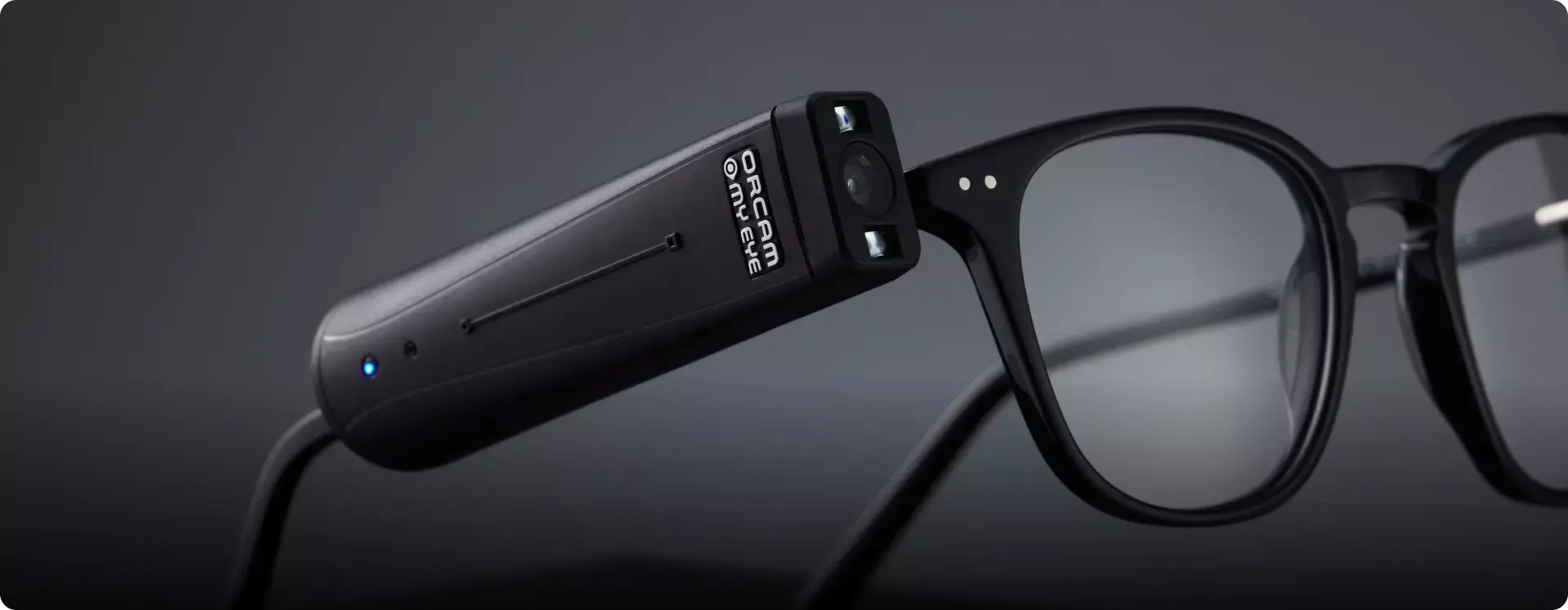Maximize Welding Efficiency with Gasless MIG Wire and Nitrogen Gas Regulator
Welding is an essential process in many industries, from construction and automotive repair to manufacturing and metal fabrication. The need for efficient, cost-effective, and high-quality welding solutions has never been greater. Among the innovative tools and materials making a difference in the field are Gasless MIG Wire and the Nitrogen Gas Regulator. These two components are transforming the way professionals and hobbyists approach welding, offering improved performance, convenience, and safety.
What is Gasless MIG Wire?
Gasless MIG Wire, also known as flux-cored wire, is a type of welding wire that eliminates the need for an external shielding gas. Unlike traditional MIG (Metal Inert Gas) welding that requires a gas cylinder—typically filled with argon, carbon dioxide, or a mix—the gasless variant has a flux core. This core creates a shielding gas as it burns, protecting the weld pool from atmospheric contaminants such as oxygen and moisture.
This wire is especially valuable in outdoor welding environments where wind can blow away shielding gas, resulting in poor weld quality. Since Gasless MIG Wire produces its own shield, it ensures consistent, high-quality welds even in breezy or unstable conditions. It is also a favorite among beginners due to its ease of use and portability.
Advantages of Gasless MIG Wire
- Portability: With no need for a gas tank, welders can move freely and work in remote or off-grid locations.
- Cost-Effective: You save money by not having to purchase and refill gas cylinders.
- Stronger Welds: The flux core creates deeper penetration, making it ideal for thicker materials.
- Weather Resistant: Ideal for outdoor projects, as it doesn’t rely on external gas that can be disrupted by wind.
- User-Friendly: It simplifies the welding setup and is easier to use for beginners and hobbyists.
How a Nitrogen Gas Regulator Enhances Performance
Even though Gasless MIG Wire is self-shielding and does not require an external gas for protection, certain processes within a workshop may still benefit from nitrogen gas usage. This is where the Nitrogen Gas Regulator plays a crucial role.
A Nitrogen Gas Regulator is used to control the flow and pressure of nitrogen gas from a cylinder. While nitrogen isn’t typically used as a primary shielding gas in MIG welding, it serves many auxiliary purposes in metal fabrication, including:
- Purging stainless steel pipes to prevent oxidation.
- Blanketing sensitive areas from atmospheric contamination.
- Leak testing of gas lines or refrigeration systems.
By using a high-quality Nitrogen Gas Regulator, professionals can ensure a consistent and accurate gas flow, improving the reliability and safety of these tasks. Precision is essential in these applications, and a well-calibrated regulator ensures that nitrogen is used efficiently and effectively.
Applications in Real-World Settings
The combination of Gasless MIG Wire and a Nitrogen Gas Regulator can be a powerful setup in various professional and industrial scenarios.
- Construction Sites: The portability of gasless wire welding is invaluable in fieldwork. Workers can complete tasks without lugging around heavy gas tanks, while still achieving durable welds. Nitrogen regulators are used in parallel for pipe purging during installations.
- Automotive Repairs: Welding frames, exhaust systems, and bodywork often benefit from gasless wire due to its simplicity and mobility. Nitrogen is used for pressure testing and cleaning automotive components.
- Workshops and DIY Projects: Hobbyists and fabricators find Gasless MIG Wire extremely convenient for garage-based projects. If additional nitrogen applications arise, the Nitrogen Gas Regulator provides the necessary control.
Safety Considerations
Both Gasless MIG Wire and Nitrogen Gas Regulators offer improved safety when used correctly.
- Gasless MIG Wire reduces the risk of gas leaks and fire hazards, as no external gas is needed.
- Nitrogen Gas Regulators, when properly fitted and maintained, ensure that gas is dispensed at safe and consistent pressures, reducing the risk of accidents.
It is essential to follow manufacturer guidelines and safety protocols when handling any welding or gas equipment. Regular maintenance of tools, wires, and regulators prolongs their lifespan and ensures optimal performance.
Choosing the Right Equipment
When selecting Gasless MIG Wire, consider the wire diameter and metal compatibility. Common types include E71T-GS and E71T-11, with different performance characteristics based on the metal type and desired weld quality. Thicker materials generally require a larger wire diameter.
For Nitrogen Gas Regulators, look for features like:
- Dual gauge displays (showing tank pressure and delivery pressure)
- Durable brass construction
- Easy-to-adjust knobs for fine control
- Compatibility with standard nitrogen cylinders
Investing in reputable brands ensures reliability and long-term value.
Conclusion
In modern welding operations, efficiency, mobility, and safety are key factors for success. Gasless MIG Wire offers a practical solution for welding without the hassle of external gas, while the Nitrogen Gas Regulator provides precision control for tasks involving nitrogen gas. Whether you’re working on a construction site, fixing a vehicle, or tackling a home project, combining these tools can significantly enhance your welding capabilities.
By understanding and utilizing Gasless MIG Wire and Nitrogen Gas Regulators, both professionals and DIY enthusiasts can take their metalworking skills to the next level.
recent post
Betting Insights Navigating the World of Gambling Strategy
December 3, 2025
The Best Casino Software Providers
December 3, 2025
Лучшие онлайн казино: актуальные сайты
December 3, 2025
888 Casino Análise Exclusiva de Confiabilidade e Segurança
December 3, 2025
CONTACT US

Category
- 1! No category
- 11! Без рубрики
- 112-14.11
- 21xbet
- 11xbet arabic
- 11xbet Korea
- 11xbet RU
- 61xbet russian1
- 11xbet-india-online.in3
- 11xbetfrance.win
- 120betcasinoportugal.com
- 120betgermany.com
- 120betitaly.com
- 122bet
- 125.11
- 34122
- 14rabetbd.cc
- 15lionsmegaways.co.uk
- 17bitcasinoaustralia.net
- 17bitcasinocanada.net
- 1888casinobrasil.com
- 188fortunes.org
- 5a16z generative ai
- 1abukingcasino.us
- 1admiral-casino-italia.com
- 2adobe generative ai 2
- 1adonnasbakery.net
- 1adventurefilmfestival.gr
- 1agent-no-wager.uk
- 1ai chat bot python
- 1Ai News 2025
- 1amonbetnederland.com
- 1amunracasino.us
- 1amunracasinoitalia.net
- 1ancorallZ 2000
- 1andarbahar.us
- 2armynow.net
- 1avantgardecasinouk.uk
- 1avia-masters.win
- 1aviamasters-games.net
- 1ballycasinouk.me.uk
- 1bankonbet.us
- 1bankonbetes.net
- 1bankonbetgr.com
- 1bankonbetnorge.com
- 1basswin.us
- 1basswinukcasino.uk
- 2bauhutte-g.com
- 2bcgame1
- 2bcgame2
- 2bcgame3
- 2bcgame4
- 2bcgame5
- 1bdmbetespana.net
- 1behar.hr
- 1betonred-australia.net
- 1betonred-cz.org
- 1betonreddeutschland.com
- 1betonredespana.net
- 1betonredfrance.com
- 1betonreditaly.net
- 1betonredpl.win
- 1betonredportugal.net
- 1bettyspincanada.com
- 1bettywinscasino.app
- 1bettywinscasinocanada.com
- 1bigbambooslot.win
- 1bigbassbonanza.cc
- 1bigbassbonanza.cc2
- 1bigbasssplash.cc
- 1bigbasssplash.com.es
- 1bigbasssplashdemo.co.uk
- 1bigbeverage.net
- 1billionairespincz.com
- 1billionairespinfrance.com
- 1bitstarzcanada.com
- 1bitstarzcasinodeutschland.com
- 1bizzo.at
- 1bizzocasinoespana.net
- 1bizzocasinoitalia.org
- 855blog
- 1bridgestl.org
- 57Business
- 1candy-spinz-casino.com.de
- 1candyspinzespana.com
- 1Capospin Ελλάδα
- 1captaincookscasinonz.com
- 10Career
- 1carlosserrano.org
- 1casadonramon.com.mx
- 1cashwincasino.us
- 1casiniacz.com
- 17casino
- 1casino en ligne luxembourg
- 1casino en ligne suisse legal
- 1casino01-12-1
- 1casino0212
- 1casinobet2
- 1casinobet3
- 1casinoclassicaustria.com
- 1casinodayscanada.org
- 1casinomaniaitalia.net
- 1casinon1bet.us
- 2casono02123
- 1catholicmyanmar.org
- 1cazeuscasinoitalia.com
- 1cazeusfrance.com
- 1CH
- 2chefi.gr
- 1chicken-cross.org
- 1chicken-road-game.org.uk
- 1chicken-road-it.org
- 1chicken-road2.co.uk
- 1chicken-road2.us
- 1chickenroadespana.com
- 1chickenroadgame.cc
- 1chickenrush.us
- 1CIB
- 1classiccasino.us
- 1cleopatraslot.us
- 1clovermagic.net
- 1clovermagic.us
- 1clovermagiccasino.us
- 1coolzinodeutschland.com
- 1coolzinoespana.com
- 1corgibetcz.com
- 1corgibetgreece.com
- 1corgibetmagyar.com
- 1cosmocasinonz.net
- 1cresuscasino1.net
- 1cresuscasinofrance.net
- 1crownplaycasino-au.net
- 1curiumpalacehotel.com.cy
- 1cymic.org.cy
- 1definemystyle.com
- 1denderacasino.com.de
- 1denderacasinoaustralia.com
- 1digitalgmu.ru 2000
- 1dollycasinoitalia.net
- 1dollycasinoitalia.org
- 1dollycasinoosterreich.com
- 1dollycasinopl.com
- 1dropthebossgame.us
- 1dsfgsdg
- 1EC
- 1en 1430
- 1encefa.com
- 1eurobetcasinoitalia.com
- 1eyeofhorus.cc
- 1fatboss.us
- 1fatbosscasinofrance.com
- 1fatpiratecasinoespana.com
- 1fatpiratecasinopolska.com
- 1fatpirateitaly.com
- 1fatpirateuk.uk
- 1felixspinitalia.com
- 1felixspinosterreich.com
- 13Finance
- 1fireinthehole3.uk
- 1fortuneoxplataforma.com
- 1funkyaardvark.co.uk
- 1gambloriapolska.com
- 1gatesofolympus1000.com.de
- 1gatesofolympusslot.cc
- 1gatesofolympussuperscatter.co.uk
- 1gatesofvalhalla.org.uk
- 1getpicpal.com
- 1glorycasinoapp.win
- 1goldblitzextreme.com
- 1goldencrowncasinoaustralia.net
- 1goldenmister.us
- 1grandearmadio.com
- 1grandivy.us
- 1grandmondialcasinocanada.com
- 1grandmondialcasinoosterreich.com
- 1grandmondialcasinoslovensko.com
- 1gransinogreece.com
- 1gxmblecasinofrance.com
- 1hellspin-casino-australia.org
- 1hellspinaustralia.win
- 1heyspin.us
- 1highflybetbelgium.com
- 1hitnspinbelgique.com
- 1hitnspindeutschland.net
- 1hoghospice.org
- 1hollywoodbetsmz.com
- 244Home
- 1hothotfruit.co.uk
- 1hotslotspl.net
- 1hrcarers.org.uk
- 1hudsunmedia.com
- 1huffnevenmorepuff.us
- 1huffnmorepuff.uk
- 2imvest.it
- 1instaspincasino-nl.net
- 1investacadiana.org
- 10Investment
- 1iris.mk
- 1irwincasino.us
- 1istoriesadespoton.gr
- 1ivibetgreece.com
- 1ivibetkasyno.net
- 1ivycasino.net
- 1jackpotcityitaly.com
- 1jackpotcitynz.net
- 1jackpotcitysouthafrica.com
- 1jamesbrausch.com
- 1jonbet.br.com
- 1jonsk.mk
- 1joycebarlow.com
- 1justcasino.me.uk
- 1justcasino.us
- 1justcasinonz.net
- 1karaokemelody.com
- 1katanaspincasino.org.uk
- 1katanaspinuk.uk
- 1kazino2
- 1king-billy-casino-australia.net
- 1kingbillycasinoaustralia.net
- 1kingbillycasinocanada.com
- 1kingbillycasinoitalia.com
- 1kingjohnnie.us
- 1kingmakercasinoitalia.net
- 1kittyglitter.games
- 1krsosh.ru 1000
- 1lalabetnederland.net
- 1legacyofdeaddemo.com.de
- 1lemoncasinode.net
- 1leoncasinoaustralia.net
- 1leoncasinonz.com
- 1lepharaohslot.us
- 1longpawscomedy.co.uk
- 1loreleibrewing.beer
- 1lucky7-casino.us
- 1luckygreencasino.us
- 1luckyonescasinonz.com
- 1luckyonescasinoosterreich.com
- 1lukkicasinodeutschland.com
- 1magiuscasinofrance.net
- 1magiuscasinopolska.com
- 1malinacasinofrance.net
- 10Marketing
- 1marniegrundman.com
- 1Maxi reviewe
- 1megajokernetent.com
- 1megajokerslot.net
- 1meteo-news.gr
- 1millionercasinoespana.com
- 1minesgame.org.uk
- 1mini-review
- 5Mini-reviews
- 1mombrand
- 16monobrand
- 11monobrend
- 1montecryptoscasinos.com
- 1moonwincasinoau.com
- 1More
- 0morozovskobr.ru
- 2mostbet
- 1mrvegasuk.uk
- 1myempirecasinodeutschland.com
- 1myempirecasinoitalia.com
- 1n1betcasino.uk
- 1needforslotsaustralia.com
- 1neospinaustralia.net
- 1netwincasinoitalia.com
- 1Neue Casinos Schweiz 2025
- 2NEW
- 278News
- 1ninecasino-gb.uk
- 1ninecasinodeutschland.com
- 1ninecasinofrance.org
- 1ninecasinoportugal.com
- 2nvcasinoonline.com.de
- 1nystagmus.me
- 1oddboy.nz
- 1ohridtrail.mk
- 1oishidelights.org
- 6Omegle
- 6Omegle cc
- 10Online Business
- 1oscarspinespana.com
- 1oscarspinitalia.com
- 1oshicasinoaustralia.net
- 1ozwin-casino-australia.org
- 1ozwincasino.uk
- 14Pablic
- 1pachinkogame.cc
- 2parcadfer.com
- 1partiggiano.com
- 1penaltyshootout.us
- 1Pin UP Online Casino
- 1Pin-Up oyunu
- 1Pin-Up TR
- 1Pin-Up UZ
- 1pinupazerbaycan.win
- 1pistolocasinodeutschland.com
- 1pistolocasinouk.uk
- 1pixiesoftheforest.cc
- 1planetwin365casinoitalia.com
- 1playcroco.uk
- 1playjonnycasinobelgie.com
- 1playjonnydeutschland.com
- 1playojo.games
- 1playojoespana.com
- 1playojouk.co.uk
- 1playregalespana.com
- 1playuzuespana.net
- 2plinko-official.com
- 1plinkoespana.com
- 1plinkogamecasino.net
- 1plinkogamedownload.in
- 1plinkorecensioni.org
- 1poduzetnicki-centar.hr
- 1pokerstarscasinoitalia.net
- 1posidocasinofrance.com
- 52Post
- 1pragmaticplayslots.cc
- 1princesscasinoitalia.com
- 1prviput.hr
- 1psiloritis-natural-park.gr
- 28Public
- 1quatrocasinocanada.org
- 1rabonaosterreich.com
- 1ragingrhino.org
- 1rainbowriches.cc
- 1rainbowrichesslots.uk
- 1razedcasinonz.com
- 1retrobetcanada.com
- 1retrobetosterreich.com
- 5review
- 18Reviewe
- 11reviewer
- 1richardcasino.us
- 1rickycasinoaustralia.net
- 1rizkcasinonz.com
- 1rjlprecisioneng.co.uk
- 1robocatfrance.com
- 1robocathungary.com
- 1rocketplaynewzealand.com
- 1rolandjaccard.com
- 1rollx-game.org
- 1rollxocanada.com
- 1roolicasinoaustralia.net
- 1roulettinoportugal.com
- 1royaljeet247.win
- 1royalvegasnz.net
- 1rtbetcanada.com
- 1rtbetgreece.com
- 1rubds54.ru 36
- 1satbet-india.net
- 1satbet.us
- 1savaspin-be.com
- 1savaspin.us
- 1savaspincasino-de.com
- 1savaspinespana.com
- 1savaspinfrance.com
- 1savaspinitaly.com
- 1Semaglutide Online
- 1sgcasinoitalia.net
- 1sgcasinoosterreich.com
- 1sigurnahrvatska.hr
- 1skycrown-casino-australia.net
- 4slot
- 1slotlordscasinocanada.com
- 1slotlordsdeutschland.com
- 1slotmafiaaustralia.com
- 1Slots
- 1slots-magic.us
- 1slotspalacesuomi.com
- 1slovenska-pomlad
- 1solidarnost.mk
- 1spain
- 1spin-casino-chile.net
- 1spin-casino-nz.net
- 1spinangacz.com
- 1spinangadeutschland.com
- 1spingeniecanada.com
- 1spingenieespana.com
- 1spingrannyespana.com
- 1spingrannyitaly.com
- 1spinmama-de.com.de
- 1spinmama-pt.com
- 1spinmamaespana.com
- 1spinmamafrance.net
- 1spinmamaitaly.net
- 1spiritcasinonz.com
- 1srisailamonline.com c1
- 1starcasinoitalia.com
- 1stockx.co.nz
- 1sunofegypt3.uk
- 1super-ufa-slot.com
- 1sweet-bonanza-germany.com
- 1sweetbonanzajogo.com
- 1sweetbonanzaslot.us
- 1t.meriobet_zerkalo_na_segodnya 3000
- 1tarifahip.com
- 1tedxmarseille.com
- 1teenpattigame.win
- 1test
- 1tfsvl.co.uk
- 1theathinai.com
- 1thedoghousemegaways.us
- 1thegeekyglobe.com
- 1thegrandivy.org
- 1thorpemarket.org.uk
- 1tonyspinscanada.com
- 1tower-x-game.net
- 1towerxgames.net
- 1tsarscasino.us
- 1tsarscasinocanada.com
- 1twincasino-sv.com
- 1twincasinouk.uk
- 1twinspin-it.com
- 15uncategorized
- 1uniquecasinofrance.net
- 3Up X
- 1UP X Casino
- 1UP x Бонусы
- 1vdbf.org
- 1vegasherocasino.co.uk
- 1vegasino-portugal.com
- 1vegasinogreece.com
- 1vegasinopoland.com
- 1vem-apostar-pt.net
- 1vemapostar-portugal.net
- 1verdecasino-deutschland.net
- 1verdecasino.co.uk
- 1verdecasinoitalia.net
- 1verdecasinonorge.com
- 1verdecasinopl.net
- 1verdecasinoportugal.com
- 1verdecasinoromania.net
- 1verywellcasino.org.uk
- 1vincispinfrance.net
- 1vulkanvegascanada.com
- 1vulkanvegasdenmark.com
- 1wanabet.us
- 1wanabetespana.com
- 1wanteddeadorawild-pt.top
- 1wanteddeadorawild.uk
- 1wazambade.com
- 1wazambaslovenija.com
- 1wbcommunitytrust.co.uk
- 1wbcommunitytrust.co.uk2
- 1wearerritual.com
- 1wild-dice-casino.uk
- 1wild-robin-casino-gr.com
- 1wildfortunecasino.us
- 1wildfortunecasinoaustralia.org
- 1wildfortunedeutschland.com
- 1wildrobinfrance.com
- 1wilmaarcher.com
- 1win-spirit-australia.com
- 1winspiritcanada.net
- 1winspiritdeutschland.com
- 1winvegasplus.org
- 1wolfwinneraustralia.net
- 1wolfwinnercasinoaustralia.net
- 1wonaco-de.com
- 1woocasinoaustralia.net
- 1woodyshotdogs.com
- 1wordlid.com
- 1workforusdakc.com
- 1yaasscasino.net
- 1yeticasino.org.uk
- 1yiannismakridakis.gr
- 2zdravstvo24.mk
- 1zelenaracunica.hr
- 1zetcasino-italia.com
- 1zokipoki.mk
- 2сателлиты
- 3Текста








